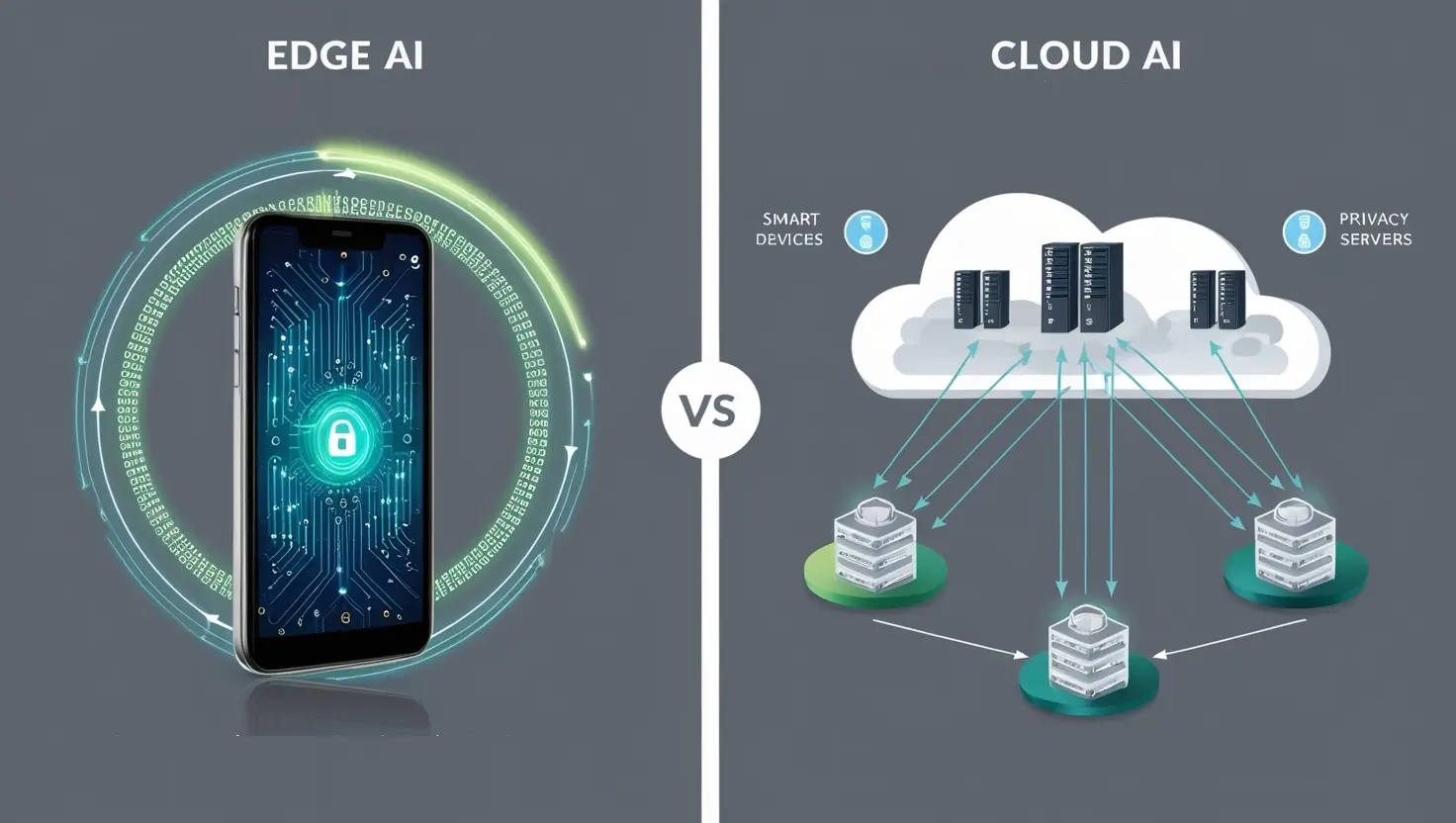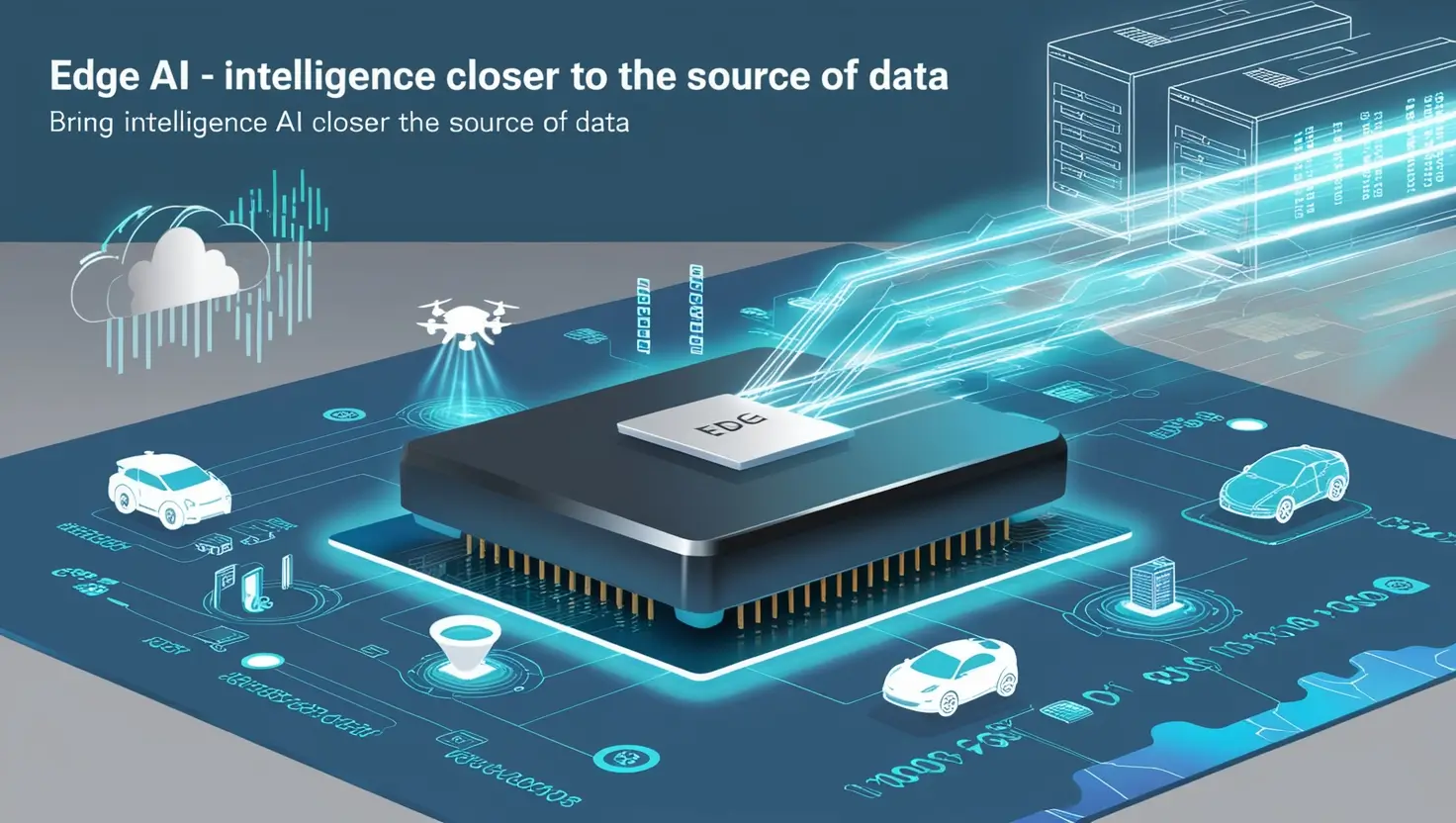Introduction
Artificial Intelligence (AI) has been predominantly associated with cloud computing and centralized data centers. However, a transformative shift is occurring in the AI landscape—Edge AI is emerging as a game-changer, bringing intelligent processing closer to the source of data generation. This paradigm shift is set to revolutionize industries by enabling faster decision-making, enhanced privacy, and reduced bandwidth usage.
In this article, we’ll explore the rise of Edge AI, understand its significance, delve into its applications across various sectors, and examine the challenges and future prospects. Whether you’re a tech enthusiast, a professional in the field, or simply curious about the latest AI trends, this comprehensive guide will provide valuable insights into how Edge AI is reshaping our world.
1. Understanding Edge AI
1.1 What is Edge AI?
Edge AI refers to the deployment of artificial intelligence algorithms on devices at the edge of the network, rather than in centralized cloud environments. This means data processing and analysis occur locally on hardware devices such as smartphones, IoT devices, sensors, and gateways.
By processing data where it is generated, Edge AI reduces the need to transmit large amounts of data to cloud servers, enabling faster responses and minimizing latency. This local processing capability is particularly beneficial for applications requiring real-time decision-making and low-latency interactions.
Edge AI is also being explored in educational technologies, especially in safe learning platforms for younger audiences. Check out our article on AI for kids – safe learning resources to learn how intelligent systems are being designed with child safety and engagement in mind.
1.2 Edge AI vs. Cloud AI
| Aspect | Edge AI | Cloud AI |
|---|---|---|
| Latency | Low latency due to local processing | Higher latency due to data transmission |
| Data Privacy | Enhanced privacy with on-device processing | Data transmitted over networks poses risks |
| Bandwidth Usage | Minimal, as less data is sent over networks | High, due to large data transfers |
| Computing Power | Limited by device hardware | Virtually unlimited cloud resources |
| Scalability | Scales with device deployment | Scales with cloud infrastructure |
| Maintenance | Requires updates on individual devices | Centralized updates and maintenance |

2. The Driving Forces Behind Edge AI
2.1 Technological Advancements
The development of powerful yet compact processors, such as GPUs and specialized AI chips, has made it feasible to run complex AI models on edge devices. Advancements in semiconductor technology have led to energy-efficient hardware capable of handling intensive computations.
2.2 Demand for Real-Time Processing
Applications like autonomous driving, industrial automation, and augmented reality demand instantaneous data processing. Any delay can result in suboptimal performance or even hazardous situations. Edge AI addresses this need by eliminating the round-trip data transmission to cloud servers.
2.3 Privacy and Security Concerns
With increasing awareness of data privacy, there is a growing reluctance to transmit sensitive information over networks. Edge AI allows data to be processed locally, mitigating the risks associated with data breaches and unauthorized access.
One powerful example of AI implementation in real-world settings is in finance. Our Python-based guide to AI in finance demonstrates how intelligent models can be deployed securely in sensitive environments.
3. Key Applications of Edge AI
3.1 Internet of Things (IoT)
Smart Homes and Buildings:
- Energy Management: Edge AI enables smart thermostats and lighting systems to learn usage patterns and optimize energy consumption.
- Security Systems: Real-time facial recognition and anomaly detection enhance security without relying on cloud processing.
Industrial IoT:
- Predictive Maintenance: Machines equipped with edge devices can predict failures by analyzing sensor data in real-time.
- Process Optimization: Local data processing allows for immediate adjustments in manufacturing processes, increasing efficiency.
3.2 Autonomous Vehicles
Edge AI is critical for self-driving cars, where milliseconds can make a difference. On-board AI systems process data from cameras, LIDAR, and other sensors to make split-second decisions without relying on cloud connectivity.
3.3 Healthcare
Medical Devices:
- Wearables: Smartwatches and fitness trackers analyze health metrics on-device to provide instant feedback.
- Diagnostic Tools: Portable medical equipment can process images and data locally, aiding in faster diagnosis.
Patient Monitoring:
- Continuous monitoring devices use Edge AI to detect irregularities and alert healthcare providers promptly.
3.4 Industrial Automation
Edge AI enhances robotics and automation by enabling machines to adapt to changing conditions on the factory floor. Real-time quality control, safety monitoring, and operational efficiency are improved through localized AI processing.
3.5 Retail and Customer Experience
- Smart Shelves: Edge AI analyzes inventory levels and customer interactions to optimize stock and layout.
- Personalized Experiences: In-store devices can tailor promotions and recommendations based on immediate customer behavior.
4. Benefits of Edge AI
4.1 Reduced Latency
By processing data locally, Edge AI eliminates the delays associated with transmitting data to and from cloud servers. This is crucial for applications where timing is critical.
4.2 Improved Privacy
Keeping data on the device enhances security and privacy. Sensitive information doesn’t need to traverse networks, reducing exposure to potential breaches.
4.3 Lower Bandwidth Usage
Edge AI minimizes the amount of data sent over networks, which is beneficial in environments with limited connectivity or high data costs.
4.4 Enhanced Reliability
Edge devices can continue to operate independently of network conditions. This resilience ensures consistent performance even when connectivity is intermittent.
5. Challenges in Implementing Edge AI
5.1 Hardware Limitations
Edge devices often have constraints on processing power, memory, and storage. Running complex AI models requires optimization to function efficiently on limited hardware.
5.2 Energy Efficiency
Balancing performance with power consumption is critical, especially for battery-operated devices. Efficient algorithms and hardware are necessary to prolong device life.
5.3 Deployment and Maintenance
Managing and updating AI models across numerous devices can be challenging. Ensuring consistency and security during updates requires robust deployment strategies.
5.4 Interoperability
With a diverse range of devices and platforms, achieving seamless interoperability is a hurdle. Standardization and open architectures can help mitigate compatibility issues.
6. Edge AI Technologies and Platforms
6.1 Hardware Accelerators
- GPUs (Graphics Processing Units): Provide parallel processing capabilities ideal for AI computations.
- TPUs (Tensor Processing Units): Specialized processors designed for machine learning workloads.
- NPUs (Neural Processing Units): Dedicated hardware for neural network inference on edge devices.
6.2 Software Frameworks
- TensorFlow Lite: A lightweight solution for deploying TensorFlow models on mobile and embedded devices.
- PyTorch Mobile: Enables PyTorch models to run efficiently on smartphones and edge devices.
- OpenVINO: An open-source toolkit by Intel for optimizing and deploying AI inference.
To better understand how neural networks function on local devices, you might want to follow this step-by-step tutorial on building a neural network in Python, which walks you through the process from scratch.
6.3 Edge AI Chips
- NVIDIA Jetson: A series of AI modules for edge computing in robotics and embedded applications.
- Google Coral: Offers Edge TPU modules for accelerating AI at the edge.
- Qualcomm Snapdragon: Integrates AI capabilities into mobile processors for smartphones and IoT devices.
7. Future Trends in Edge AI
7.1 5G and Edge Computing Synergy
The rollout of 5G networks enhances the capabilities of edge computing by providing ultra-low latency and high bandwidth. This synergy enables more complex AI processing at the edge and supports a larger number of connected devices.
7.2 AIoT (Artificial Intelligence of Things)
Combining AI with IoT leads to AIoT, where intelligent processing occurs within the network of interconnected devices. This fusion is expected to drive innovation in smart cities, agriculture, and environmental monitoring.
7.3 Federated Learning
Federated Learning allows edge devices to collaboratively learn a shared prediction model while keeping all the training data on the device. This approach enhances privacy and reduces the need for centralized data collection.
As privacy becomes more important in AI deployment, technologies like Explainable AI (XAI) and Federated Learning are gaining traction. These approaches help bridge the trust gap between human users and intelligent machines.
8. Case Studies
8.1 Edge AI in Smart Cities
Traffic Management:
Cities are deploying edge devices at intersections to monitor traffic flow and adjust signal timings in real-time, reducing congestion and improving commute times.
Environmental Monitoring:
Sensors equipped with Edge AI analyze air quality data locally, providing immediate alerts about pollution levels and enabling timely interventions.
8.2 Wearable Health Monitors
Continuous Glucose Monitoring:
Devices analyze glucose levels in real-time, providing alerts and recommendations without the need for cloud processing.
Sleep Tracking:
Wearables monitor sleep patterns and provide personalized insights, helping users improve their sleep quality through immediate feedback.
9. Conclusion
Edge AI represents a significant shift in how we process and utilize data. By bringing intelligence closer to the source, it opens up new possibilities for innovation across various industries. The benefits of reduced latency, enhanced privacy, and improved reliability make Edge AI a compelling choice for applications that demand real-time decision-making.
However, challenges such as hardware limitations and deployment complexities need to be addressed. As technology advances, we can expect to see more powerful edge devices, better energy efficiency, and improved software frameworks that will drive the adoption of Edge AI.
The future of AI is not confined to the cloud—it’s at the edge, empowering devices all around us to make smarter decisions and transform the way we live and work.
10. References
- Zhang, C., & Vasilakos, A. V. (2020). Edge Computing and Deep Learning: A Perfect Match to Promote Smart Industrial Revolution. IEEE Network, 34(6), 134-140.
- Li, S., Xu, L. D., & Zhao, S. (2018). 5G Internet of Things: A Survey. Journal of Industrial Information Integration, 10, 1-9.
- Google AI Blog. (2017). Federated Learning: Collaborative Machine Learning without Centralized Training Data.
- Intel Corporation. OpenVINO™ Toolkit.
About the Author
TechFlareAI is committed to delivering the latest insights and developments in artificial intelligence. Our mission is to make AI accessible and engaging for everyone, fostering a community of innovation and learning.
Join the Conversation
Have thoughts or questions about Edge AI? Share your insights in the comments below or join our community forum to engage with fellow AI enthusiasts!
Stay Connected
Subscribe to our newsletter for daily updates on AI trends, tutorials, and innovative projects delivered straight to your inbox.
Keywords: Edge AI, Artificial Intelligence, Internet of Things, Real-Time Processing, AI Trends, 5G, Federated Learning, AIoT
Disclaimer: The information provided in this article is for educational purposes. Always consider additional research and professional advice for specific applications.
If you’re just starting out with artificial intelligence, don’t miss our guide on how to start your AI learning journey. It’s perfect for beginners curious about the next steps.
Looking for tools to experiment with Edge AI on your own? Discover our list of the top 5 free AI tools you can start using today—no cost, just learning and building.


1 thought on “The Rise of Edge AI: Bringing Artificial Intelligence Closer to You”